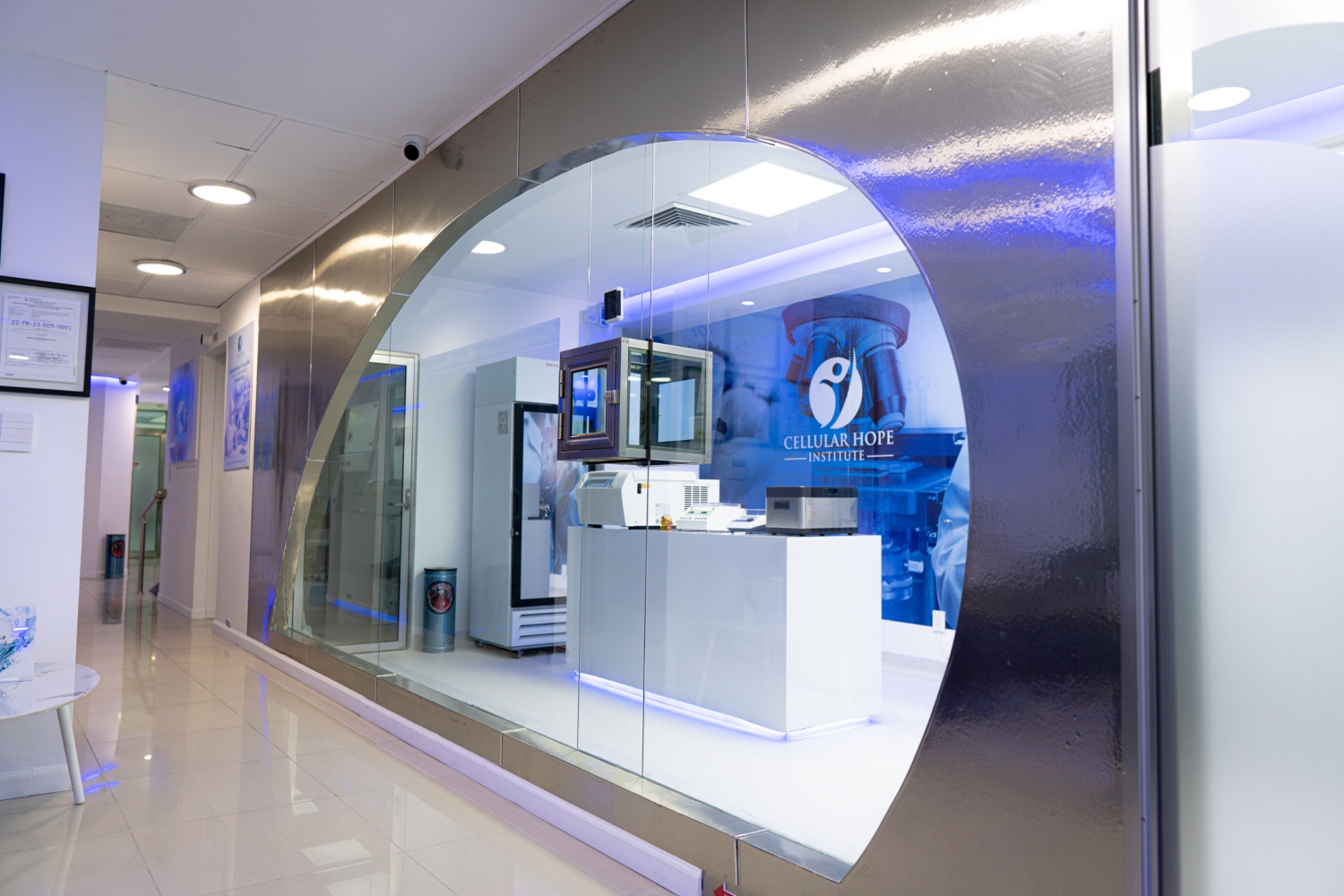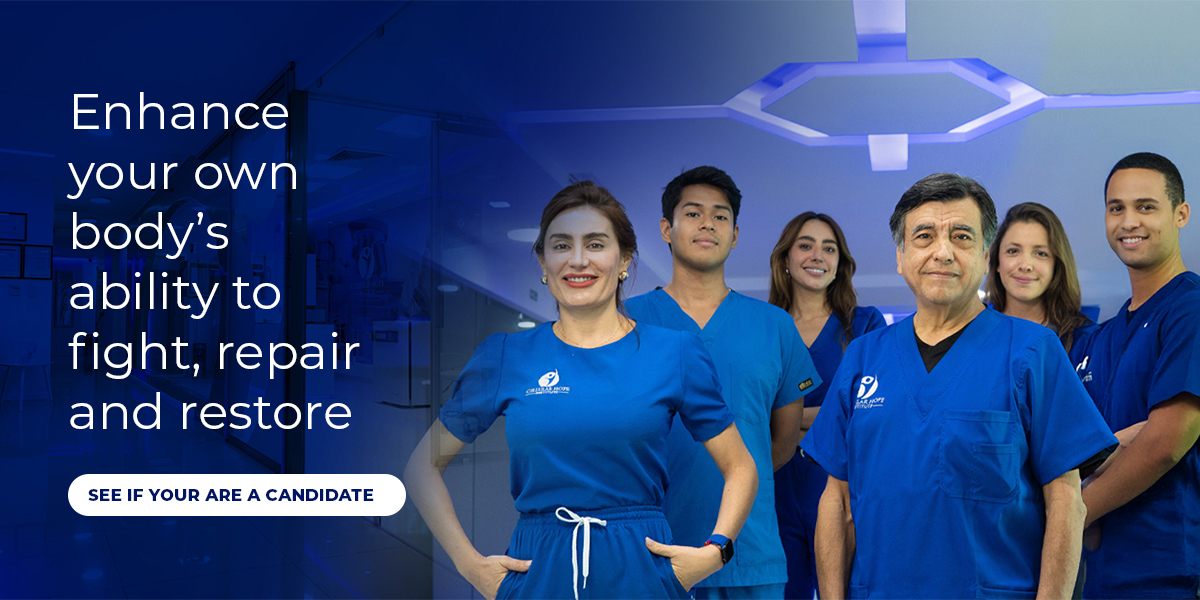Are stem cell shoulder treatments effective for long-term pain relief and better quality of life? Continue reading in this article to learn more.
Stem cells treatments represent a groundbreaking advance in medicine, offering new hope to those suffering from chronic pain in the shoulder.
Thanks to their unique ability to use the body’s own healing mechanisms and repair damaged tissues, they are able to offer long-term pain relief without the need for invasive surgery. But just how effective is a stem cell treatment for shoulders?
Recent studies have shown promising results – according to the medical Journal of Arthroscopic & Related Surgery, published by Dr. Hyunchul Jo and colleagues in 2017, the average pain scores of patients whose rotator cuffs were treated with stem cells decreased by about 40% – 60% at 3 months.
And what’s more, it continued decreasing further, reaching almost no pain at 6 months and at 1 year. Their average function score also improved significantly 1 year post-treatment, and this improvement was maintained at the 2 year follow up.
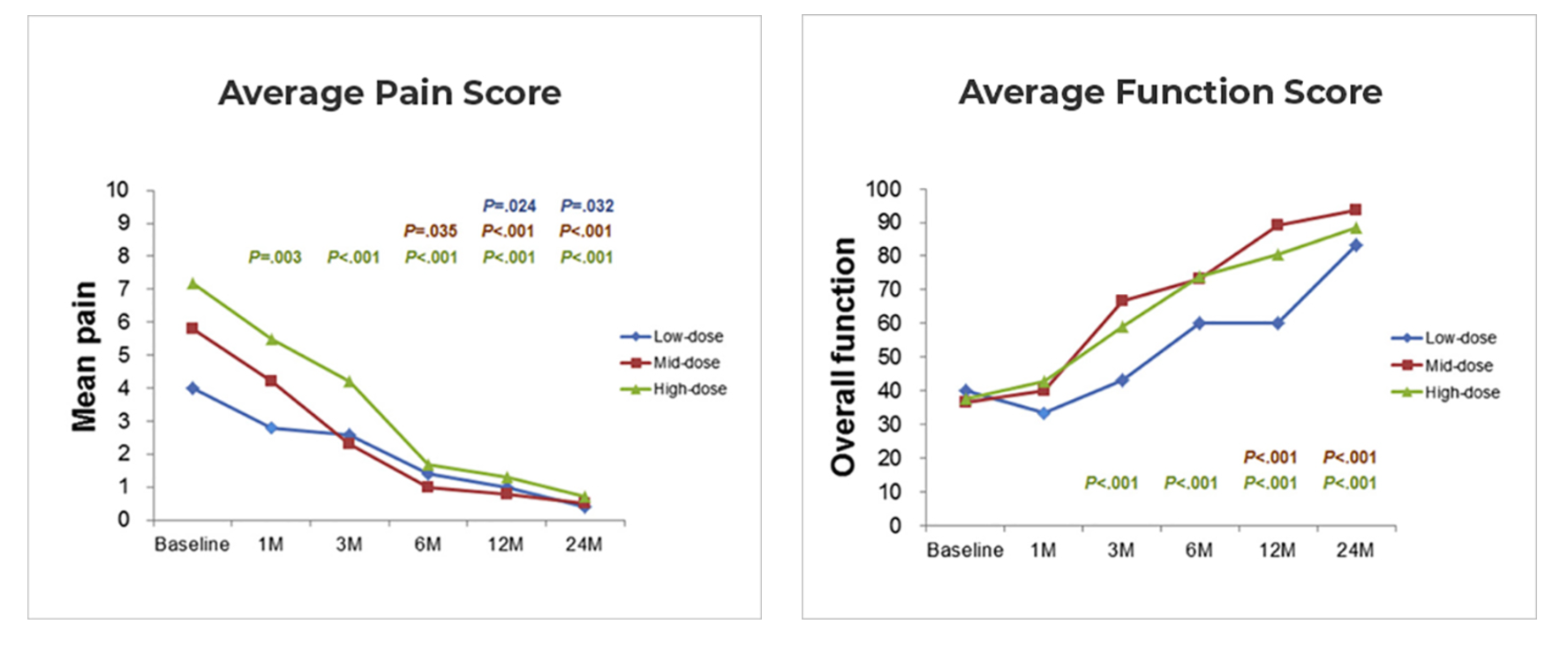
Image source: integrativerehabmedicine.com
However, when it comes to the effectiveness of stem cell treatments for shoulders, it’s important to keep in mind that it can be influenced by various factors.
In this article, we will deep dive into everything you need to know to ensure a successful outcome for your stem cell therapy – so, continue reading to learn more.
What Factors Influence The Effectiveness of Stem Cell Shoulder Treatments?
While stem cell treatments for shoulders tend to be highly effective for the majority of people, the results are not always the same for everybody.
Just like surgeries or short-term pain relief medications, there are certain individual factors that influence how your body reacts to treatment – from the nature and severity of your condition to your lifestyle, and even your discipline with following post-treatment protocols.
So, what are some factors that will impact the effectiveness of stem cell treatments for shoulders? Some of them include:
1. Whether your case is mild or advanced
Are you suffering from mild to moderate osteoarthritis, or struggling with advanced osteoarthritis? How you answer this question matters – if the case of your degenerative joint disease is moderate, you might still have some intact cartilage and joint structure.
This means that you still have some foundation for stem cells to potentially regenerate tissue and reduce inflammation, which will make your treatment more effective. What’s more, you will likely slow down your disease progression and improve your joint function.
However, if you are dealing with advanced osteoarthritis, you might not experience the same effectiveness of stem cell treatments for shoulders. Having an advanced case typically involves complete loss of cartilage, which usually means that the structural damage is too extensive for regeneration.
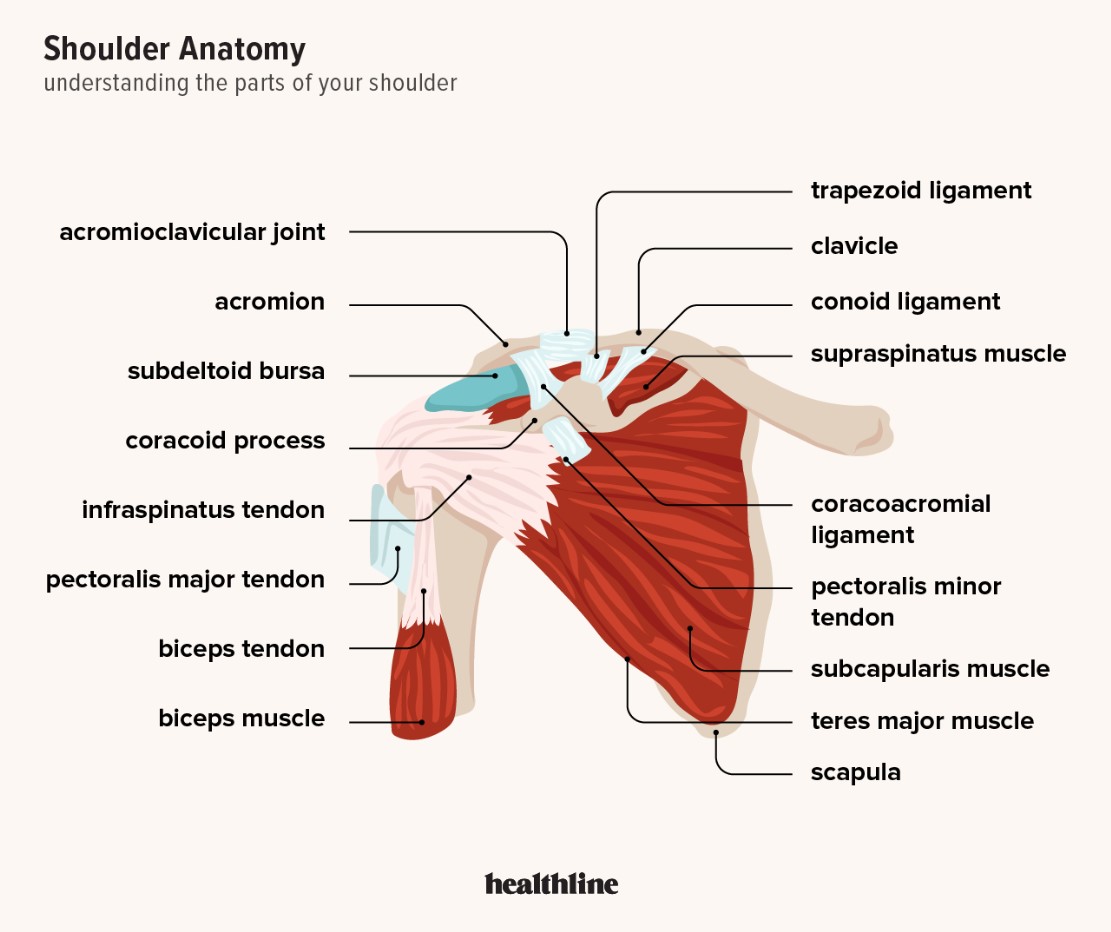
Image source: healthline.com
The same applies to other conditions or types of injuries. For example, in partial rotator cuff tears, some of the tendon fibers remain intact, allowing stem cells to stimulate tissue regeneration. Complete tears, however, may not experience the same effectiveness.
2. Whether your condition is chronic or acute
If your shoulder pain is coming from a recent injury, a stem cell treatment for shoulders is more likely to be effective compared to a chronic condition that’s been around for a while.
That’s because newly injured tissues typically have better blood flow, and a more active healing environment. This can enhance the integration and effectiveness of injected stem cells, favoring a more successful outcome of your shoulder stem cell therapy.
However, if you are suffering from a chronic condition, such as osteoarthritis or long-standing rotator cuff tears, the environment within the tissue may be less conducive to regeneration.
Since there is reduced cellular activity and increased fibrosis, as well as a diminished presence of growth factors – all of which are key for stem cell recruitment and differentiation – the repair potential of stem cells can be significantly compromised.
Essentially, it will make it harder for stem cells to engraft and exert their regenerative effects. Of course, having a chronic condition doesn’t mean that you shouldn’t do a stem cell treatment for shoulders – it will still be highly beneficial for your overall well-being!
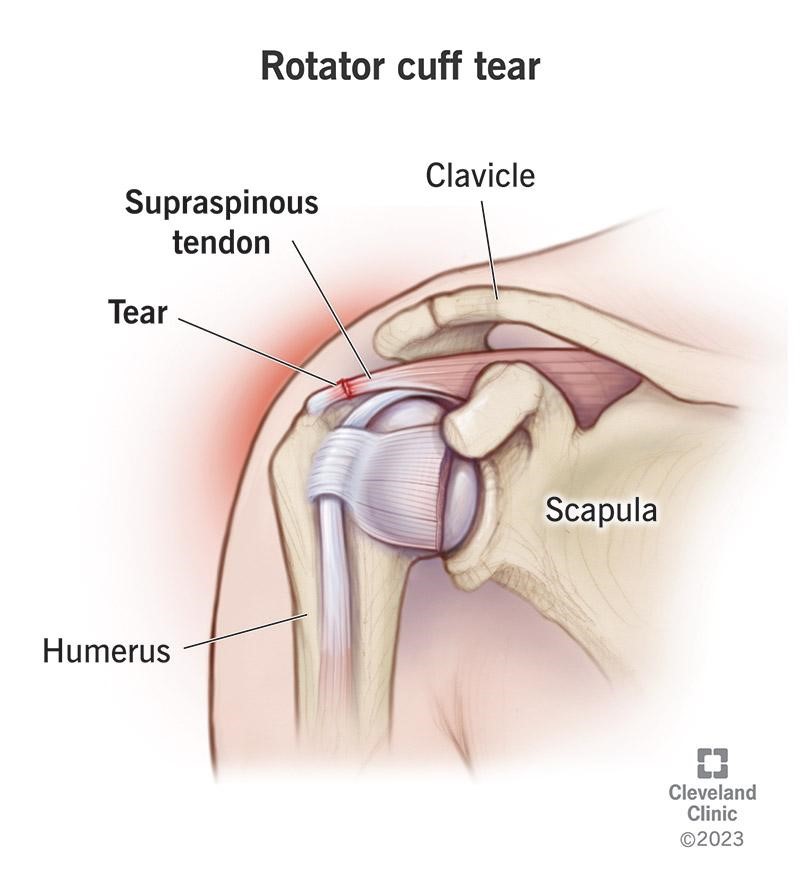
Image source: clevelandclinic.org
3. The quality of stem cells used by your clinic
Another huge factor that can impact the effectiveness of stem cell treatments for shoulders is the quality of stem cells used by the clinic that’s performing the procedure.
That’s because high-quality stem cells are more likely to retain their ability to differentiate into the necessary cell types required for repairing damaged tissue. If the cells are not viable or potent, they may not function as intended – which will impact your therapy outcomes.
But what exactly do we mean when we talk about high-quality stem cells? Here’s a few questions that you need to ask before choosing a clinic for your shoulder stem cell treatment:
- Harvesting Method – What techniques are you using to extract stem cells? Accurate and less invasive harvesting usually translates to cells of higher quality.
- Processing Techniques – How are you processing the harvested stem cells? This part of the protocol is important because proper processing is needed to isolate the specific types of cells needed for the treatment.
- Storage Conditions – How are you storing your stem cells? They must be stored under conditions that maintain their viability until they are ready to be used. This usually means storing them at very low temperatures, such as -196 degrees Celsius (-320.8 degrees Fahrenheit) in cryogenic freezers.
- Cell Potency – How are you ensuring stem cell potency? This refers to the cells’ ability to differentiate into different types. However, factors like the age of the donor, the harvesting environment, and the processing methods may impact their potency.
- Quality Control – Are you conducting rigorous testing? What kind of quality control measures are you taking? Both are essential for ensuring that the cells are not only viable, but also contamination-free.
- Regulatory Compliance – Are you adhering to the established regulatory guidelines of the country where the treatment is performed? This guarantees the safety and effectiveness of the stem cell treatments for shoulders.
To ensure the high quality of our stem cells, Cellular Hope Institute implements a stringent set of protocols for harvesting, processing, and storing.
All of our allogeneic stem cells are sourced from strictly screened donors, and are harvested under highly controlled conditions to guarantee their viability and purity.
Our state-of-the-art clinic in Cancun, México is equipped with the latest technology, which is combined with advanced techniques to isolate and enrich the stem cells, making sure that we only use the most potent ones for your treatment.
Our cryopreservation methods involve ultra-low temperature storage in liquid nitrogen to maintain cellular integrity and prevent degradation.
This meticulous approach ensures that our stem cells remain biologically active and ready for therapeutic use, maximizing the safety and efficacy of your stem cell treatment for shoulders.
4. Your overall health
Of course, your overall health shouldn’t be underestimated when it comes to how effective a stem cell treatment for shoulders can be. For example, if you have an underlying condition such as diabetes or obesity, your response to treatment may not be optimal.
That’s because they can impair your body’s natural healing processes – in diabetes, high blood sugar levels can damage blood vessels, while obesity can lead to chronic inflammation. In both cases, cell activity and regenerative capacity may be compromised.
Lifestyle factors can also play a role in the effectiveness of stem cell treatments for shoulders – habits such as smoking, or simply living a sedentary lifestyle, can reduce blood flow and oxygen delivery, which are essential for tissue repair and regeneration.
That’s why at Cellular Hope Institute, we don’t only focus on treating a specific issue – we also give you guidance towards a healthier lifestyle that includes good nutrition, regular physical activity, and adequate sleep.
All of these contribute to an optimal environment for healing and regeneration.
5. The technique and administration of stem cell injections
In addition to the previously mentioned factors, the way your stem cell injections are administered is also a huge contributor to the effectiveness of stem cell treatments for shoulders.
This includes the preparation of the stem cells, as they have to be:
- Isolated from other cellular materials;
- Activated to enhance their regenerative ability;
- Concentrated, which will determine the potency of the injection;
- Characterized, in order to confirm that they are indeed viable and functional;
- Checked to ensure that they are free from contamination
The accuracy of the injection also matters – aka the precision with which they are injected into the shoulder. Precise placement means that they can exert their regenerative effects more effectively.
Reputable clinics such as Cellular Hope Institute use imaging techniques, such as ultrasound or MRI, to guide the injection.
Doing this will not only enhance the accuracy, but also reduce the risk of damaging surrounding tissue – making stem cell treatments for shoulders much more effective.
FAQ
What conditions in the shoulder can stem cell treatment help with?
Stem cell treatments can help with several shoulder conditions including rotator cuff injuries, osteoarthritis, tendonitis, and other degenerative or inflammatory issues.
These therapies aim to reduce pain and improve function by promoting tissue regeneration and reducing inflammation.
What is the success rate of stem cell therapy for shoulder injuries?
The success rate of stem cell therapy for shoulder injuries varies widely based on factors like the specific condition treated, the patient’s overall health, and the quality of the stem cells used.
Clinical outcomes can be positive, with many patients experiencing reduced pain and improved function, but robust, long-term data is still being gathered to better define success rates.
How many injections are typically required for shoulder treatment?
The number of stem cell injections required for shoulder treatment can vary. Typically, one to three injections may be administered depending on the severity of the condition and the patient’s response to the initial treatment.
Follow-up treatments may be necessary to achieve optimal results.
How do I know if I am a good candidate for stem cell therapy for the shoulder?
You may be a good candidate for stem cell therapy for the shoulder if you have chronic pain, limited mobility, or injuries like rotator cuff tears, tendonitis, or early-stage osteoarthritis that haven’t responded well to traditional treatments.
Ideal candidates are in good overall health, with no uncontrolled chronic conditions, and have realistic expectations. A consultation with a specialist, including imaging and medical history review, can determine if stem cell therapy is suitable for your condition.
Can stem cell therapy prevent shoulder surgery?
Stem cell therapy has the potential to delay or prevent shoulder surgery for some patients by promoting tissue repair, reducing inflammation, and alleviating pain. It is particularly effective for conditions like partial rotator cuff tears or early-stage osteoarthritis.
However, its success depends on the severity of the damage, and advanced cases may still require surgical intervention.
